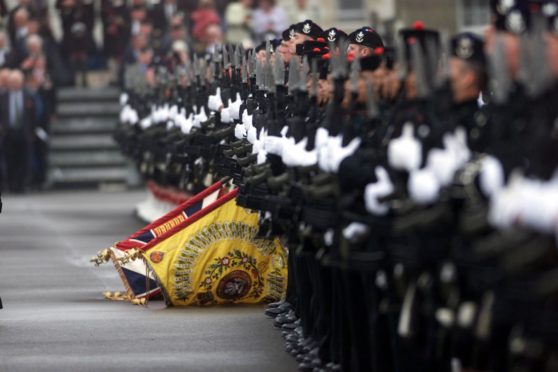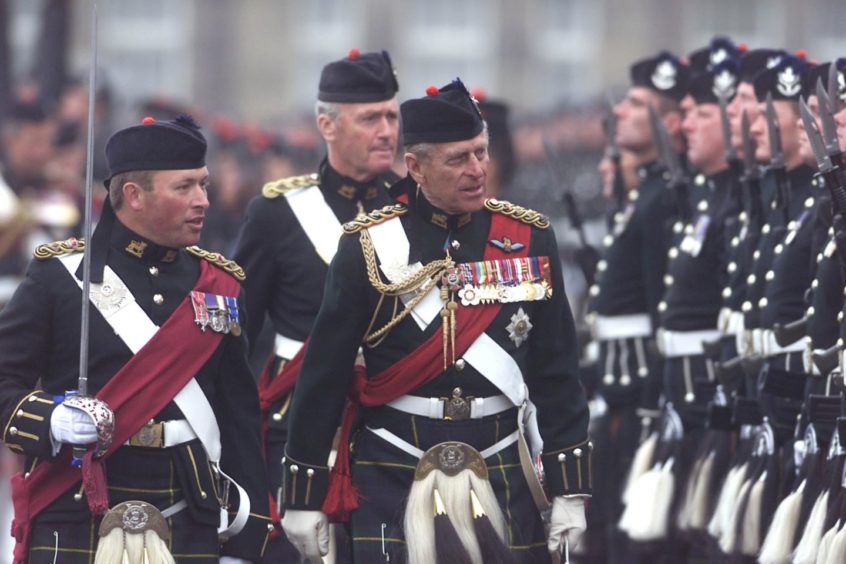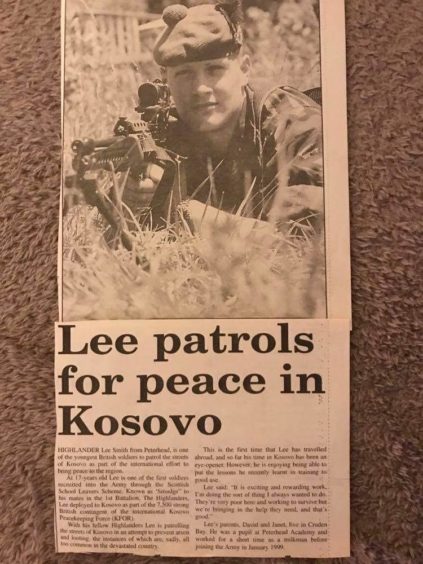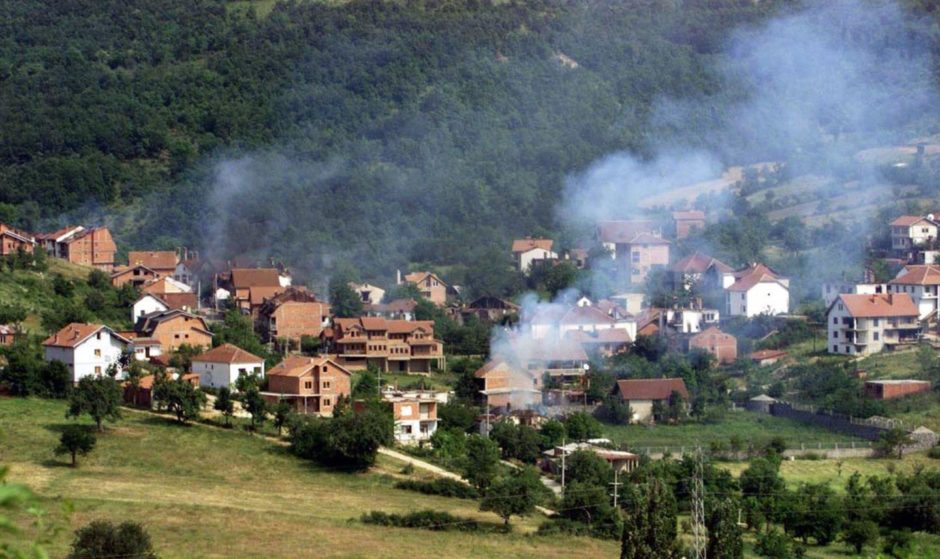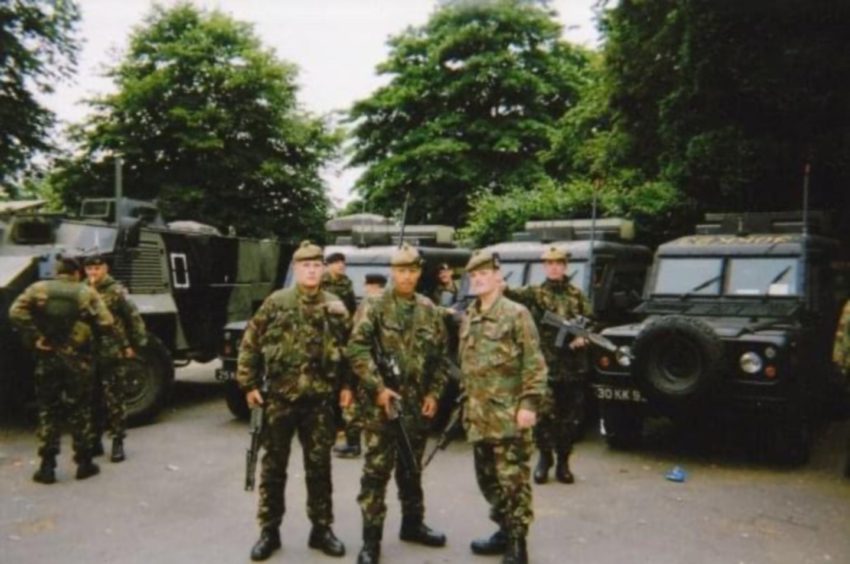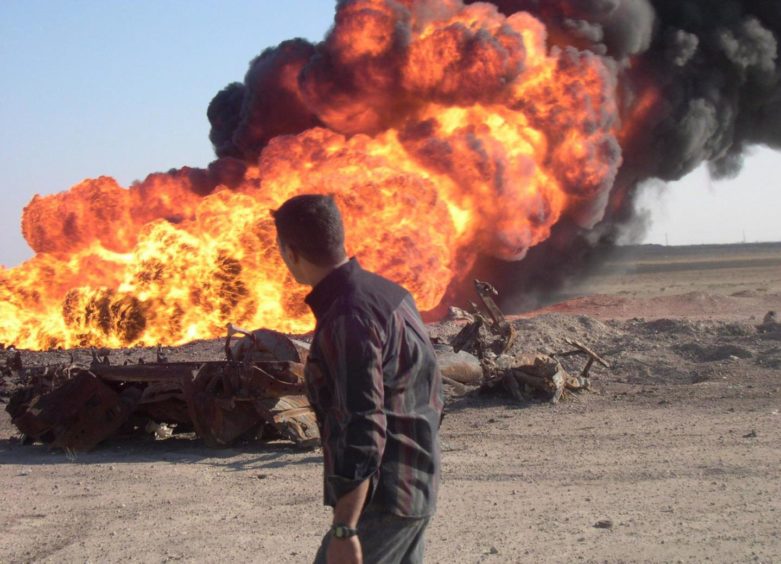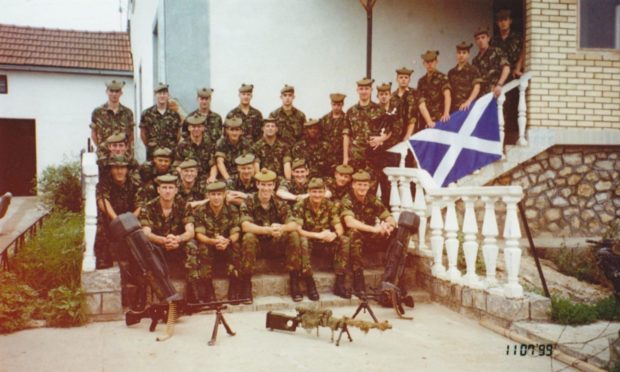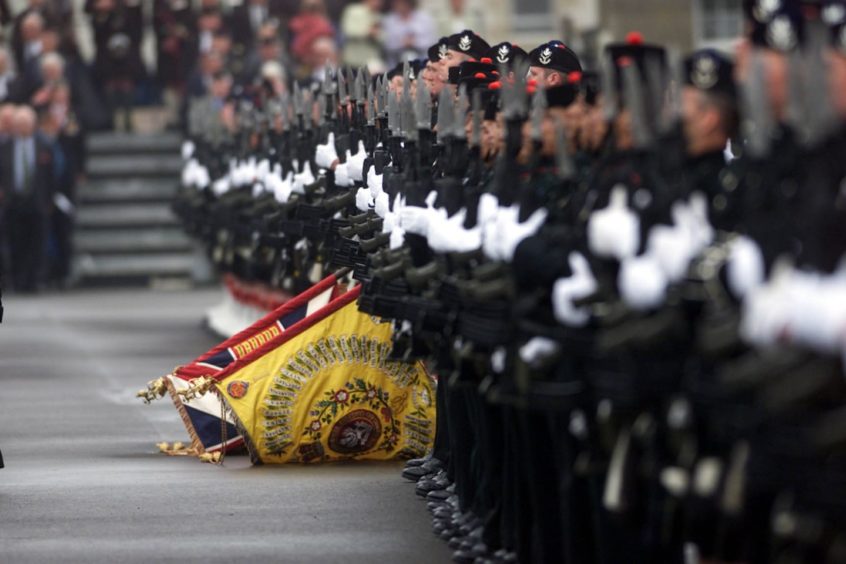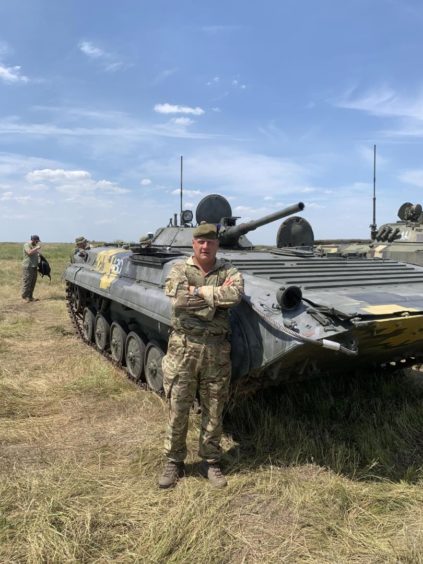They were together for a dozen years during which they served their country with arduous tours of duty in Northern Ireland, Kosovo, Bosnia and Iraq.
But proud veterans of The Highlanders regiment believe those fleeting years in the history of the British Army risk being overlooked and forgotten forever.
Although short-lived, the regiment still inspires loyalty and pride in its members, who don’t want its memory to sink without trace.
The Highlanders were formed in 1994 as part of a defence review which amalgamated the Queen’s Own Highlanders (QOHldrs) with the Gordon Highlanders.
The QOHldrs was already an amalgamation, in 1961, of the Seaforth Highlanders, and the Queens Own Cameron Highlanders.
That amalgamation, again through defence review, wasn’t entirely welcomed at the time, with rivalries at play between the two proud and ancient regiments.
But the Queen’s Own Highlanders had 32 years to gel as a regiment, with younger soldiers coming through without the old inter-regimental resentments.
As a result QOHldrs retains a strong identity, actively fostered by the former comrades.
Rivalries
It was more difficult for The Highlanders, with rivalries between the QOHldrs and the Gordons proving to be a spanner in the works when it came to creating a strong regimental identity.
Rivalry went as far as enmity among older members, especially as the QOHldrs had to lose around 200 soldiers to make way for the Gordons, and that wound didn’t have time to heal.
But in 1998, all that meant nothing to young recruit Lee Smith.
He joined the Highlanders in 1998 at 16, an escape route from potentially going off the rails in his home town of Peterhead.
Lee carried on into the 4th Battalion Royal Regiment of Scotland after the 2006 amalgamation and hopes to finish his career in the army.
Peacekeeping in Kosovo
He was one of the first to be recruited through the Scottish School Leavers Scheme and, at 17, found himself one of the youngest British soldiers to patrol the streets of Kosovo in 1999.
The Highlanders were part of the 7,500 strong contingent of KFOR, the international Kosovo Peacekeeping Force.
The young Hldr Smith was handpicked to join soldiers from other regiments working in Pristina.
Conditions were tough, and he even had to write home urgently for razor blades.
Lee, now 39, said: “It made me grow up fast.
“I had never been out of the north-east.
“The conditions the people lived in made me feel lucky.”
Lee said he was able to get to know the Roma people of Kosovo, sparking an appreciation of other cultures and diversity which remains with him to this day.
The tour ended with the regiment back for a short spell in the Highlands.
Tragedy during exercise
Then on exercise in Salisbury, Lee had another rite of passage, experiencing the death of a comrade.
He was travelling in an armoured personnel carrier when it overturned, killing 26-year-old Lt Andrew Allcock.
After this hard knock, Lee was posted in Northern Ireland and Drumcree, the regiment being billeted in the local school, closed for the marching season.
He said: “We were mainly sent to quell riots during the marching season.
“It was mainly Loyalists, and very strange to see the ‘enemy’ carrying Union flags.”
On 9/11, 2001, Lee watched the twin towers collapse with the sense that his career would now change.
But before he saw action in the Middle East, he had a second tour of duty in Kosovo, enduring a Balkan winter – ‘no worse than Peterhead,’ he said.
By now a Lance Corporal, Lee said it gave him satisfaction to find the country stabilised and largely peaceful.
Difficult tour in Iraq
His tours in Kosovo prepared him for Iraq in 2005.
“It was a difficult tour.
“The Highlanders aim was bring stability and security to the towns of Al Amara and Maj Al-Kabir against the various militias.
“We were shelled and attacked by militias, and some factions were aggressive to the British.
“They weren’t friendly like in Kosovo, we were the target.
“Six military police were killed in Al Amara just before we arrived and we lost two men including Lance Corporal Allan Douglas from Aberdeen, shot by a sniper.
“The population was too big and the army too small, and many would rather listen to clerics than embrace democracy.”
In 2006, came the transformation into the 4th Battalion and The Highlanders were no more.
After their brief incarnation, The Highlanders were amalgamated once again to become The Highlanders, 4th Battalion, The Royal Regiment of Scotland – often simply referred to as the 4th Battalion.
‘Regimental pride gone daft’
Looking back, Lee feels the regiment suffered from hostility provoked by the 1994 amalgamation.
“The Highlanders suffered from regimental pride gone daft.
“Both sides blamed each other for the 1994 amalgamation, but it was a decision taken over their heads.
“The geographical divide was the River Spey separating the Queen’s own from the Gordons and some people wouldn’t speak to anyone from the ‘wrong’ side.
“Even outsiders who came in were taken aback at the ruthlessness between personalities on the two sides.”
Preserving the regiment’s heritage
Lee is making it his mission to preserve the regiment’s heritage.
“It’s difficult because the heritage gets watered down.
“The only thing we have to identify us as Highlanders is a blue hackle which itself is a legacy of the Queens Own Cameron Highlanders.
“I’m very proud of the regimental heritage and I try and advise and recommend, but a lot of heritage has already been lost as generations move on.”
